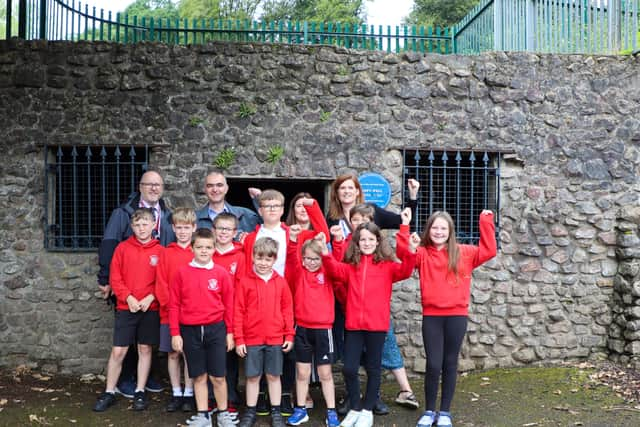Discover how Luton’s community adapts to road closures and infrastructure upgrades, turning short-term disruption into long-term sustainability and resilience. Learn more now!
In an era where environmental sustainability is becoming increasingly crucial, technological advancements are playing a key role in reducing carbon footprints. One such innovation has made its debut in a UK school, promising to substantially cut down on greenhouse gas emissions. This cutting-edge heating system marks a significant step forward not just for the institution but also for the community and the planet.
The New Heating System: An Eco-Friendly Marvel
At the core of this revolutionary heating system lies a combination of renewable energy sources and state-of-the-art technology designed for maximum efficiency. Unlike traditional systems that rely heavily on fossil fuels, this innovative solution capitalises on geothermal energy, heat pumps, and advanced thermal storage to provide a consistent and eco-friendly heating experience.
The process begins with geothermal energy, which involves harnessing heat from beneath the Earth’s surface. By tapping into this natural resource, the system can generate heat without burning any fossil fuels. Complementing this is the installation of high-efficiency heat pumps, which transfer thermal energy from the ground or air into the building, ensuring that interior spaces remain warm and comfortable throughout the year.
Additionally, the system incorporates thermal storage units that store excess heat generated during off-peak hours. This stored heat can then be utilised when demand is high, effectively balancing the energy load and reducing the strain on the grid. Through the seamless integration of these technologies, the school’s new heating system demonstrates a pioneering approach to sustainable energy use.
The Environmental Impact: A Dramatic Reduction in Emissions

The move could cut the school’s carbon emissions linked to heating by a whopping 80% 🌍. This dramatic reduction aligns with broader national and global efforts to mitigate climate change by lowering greenhouse gas emissions. The installation of this system not only ensures a sustainable future for the school but also sets a precedent for other educational institutions to follow.
By reducing reliance on fossil fuels, the school is significantly decreasing its carbon footprint. This initiative is part of a broader effort to promote environmental stewardship and educate students about the importance of sustainability. The young minds who witness this transition to greener energy will carry forward the values of conservation and responsibility, potentially becoming future advocates for environmental protection.
Cost Efficiency and Long-Term Benefits
Aside from the obvious environmental benefits, the new heating system offers considerable cost efficiencies. While the initial installation costs might be higher compared to traditional systems, the long-term savings are substantial. Reduced energy bills, lower maintenance costs, and potential government incentives for using renewable energy sources contribute to the overall financial viability of the system.
Moreover, the durability and reliability of the components used in the system ensure fewer breakdowns and a longer lifespan. This longevity translates to fewer replacements and reduced waste, further amplifying the system's sustainability credentials.
Looking Ahead: A Model for Other Schools
This groundbreaking heating system serves as a model for other schools across the country and even globally. As educational institutions look to upgrade their infrastructure, this example offers a blueprint for how to do so sustainably. The adoption of similar systems can lead to widespread reductions in carbon emissions, contributing meaningfully to the fight against climate change.
The narrative here is clear: innovation and sustainability can go hand-in-hand. By investing in advanced technologies and prioritising environmental considerations, institutions like this UK school are leading the charge toward a greener, more sustainable future.